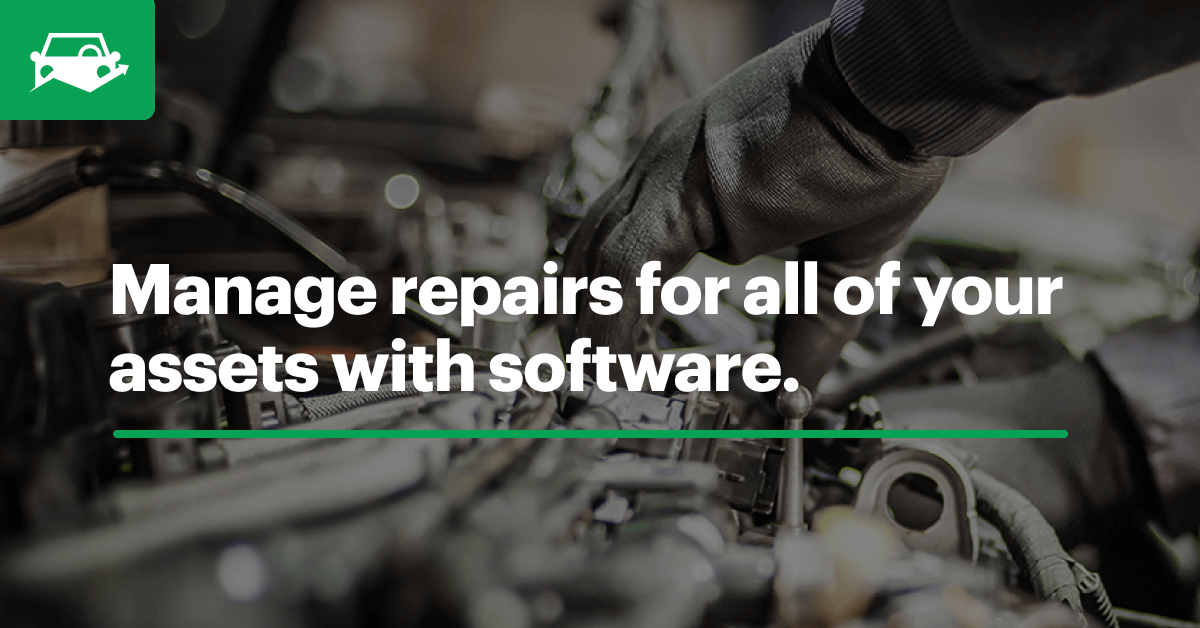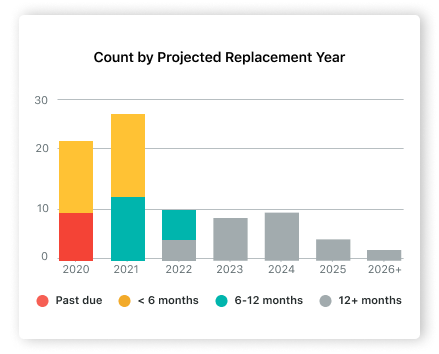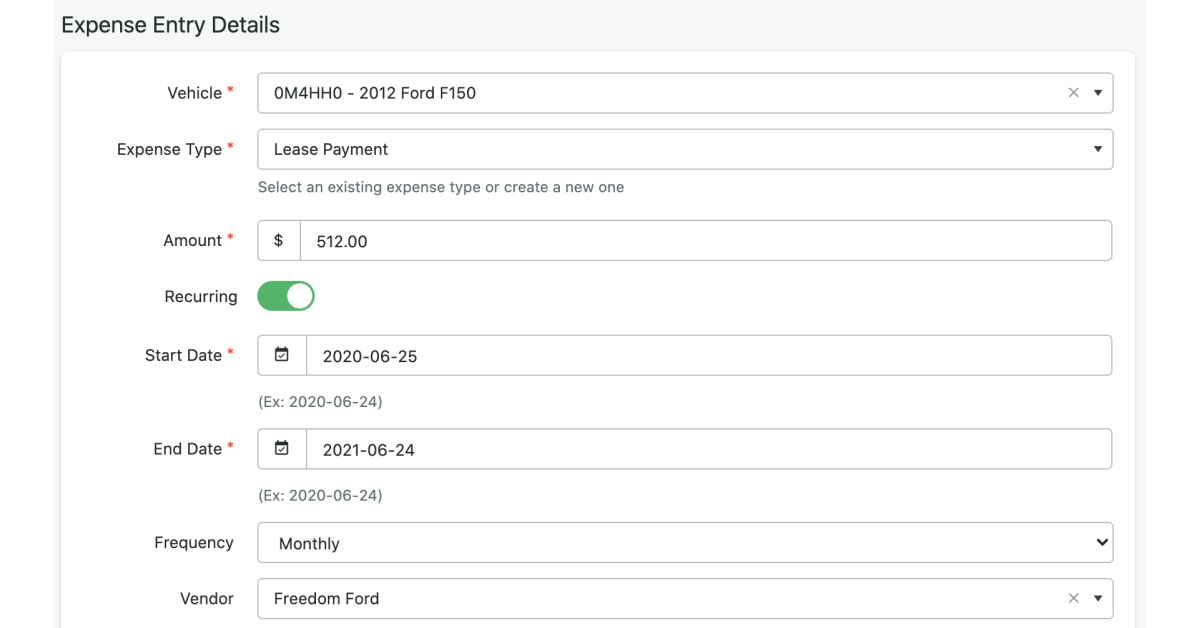Whether you’re managing one type of vehicle or a variety of equipment, a strong mobile asset management strategy can help you track fleet data in a central location, allowing you to analyze and better manage day-to-day operations.

Creating a Mobile Asset Management Strategy
Managing multiple assets can be a challenge if you don’t have the proper systems in place. Without a mobile asset management strategy, maintenance trends and costly issues can be missed for months or years at a time.
While fleet management begins with day-to-day operations like inspections and preventative maintenance, it’s important to gather and analyze the information from those tasks to ensure your assets and organization are operating efficiently.
If you aren’t measuring asset performance, you aren’t able to make informed decisions regarding your fleet.
An effective asset management strategy leverages software to automate data compilation. The ability to manage assets in a central location allows you to track costs, identify trends and get a comprehensive view of your fleet.
To develop a strategy for asset management, ask yourself does your current system provide you with data to understand asset utilization, performance and the true cost of ownership? If not, then it might be time to rethink your fleet management system.
Below are a few tips we think are crucial for developing a mobile asset management strategy.
1. Collect and Analyze Data
As a fleet manager, your most valuable asset isn’t your most reliable vehicle or employee—it’s data.
A mobile asset management strategy begins and ends with data. You’re probably already keeping tabs on most of your operations and tasks, but it’s important to make sure they’re in an easy-to-find, central location.
Manually entering data into multiple spreadsheets is a poor use of time, and it’s hard to gain any insight when the data isn’t centralized.
By using a mobile asset management software, data is automatically uploaded from operators, maintenance technicians and telematics devices. This allows you to generate and schedule custom reports to come straight to your inbox, keeping you on top of your game.
2. Leverage Software and Mobile Apps
Your assets are regularly on the go. What good are your mobile asset strategies if your solutions aren’t mobile, too?
To track assets and quickly communicate with your operators, you need to make sure you’re leveraging solutions like asset management software and mobile apps.
With mobile asset management software, you can capture all of your data in one location. Telematics, fuel card data and other information can be integrated into your fleet management software to ensure you’re getting a comprehensive look at your assets.
A native mobile app allows you and your operators the ability to upload fleet information from anywhere, ensuring seamless communication. Push notifications remind your drivers of routine tasks, like inspections and preventative maintenance.
When drivers upload critical information to the app, you are notified and can take action immediately. Seamless communication through software helps you stay proactive and avoid costly unplanned downtime.
3. Using Software to Manage Costs
As a fleet manager, you know that the performance of your assets determines the success of your business. It is critical to your bottom line to maintain the health of your assets whether they’re vehicles or heavy machinery. The best way to maintain asset health is to understand your fleet’s total cost of ownership (TCO).
Understanding your fleet’s TCO will allow you to allocate funds correctly by making data-driven decisions. This information unlocks vital insight into your fleet, but how do you calculate something so comprehensive?
A mobile asset management software provides you with accurate insight into your operating costs, allowing you to track spending, investigate concerns and forecast expenses.
The largest ongoing expenses of a fleet are fuel and maintenance. With fleet management software, data is automatically gathered and organized, allowing you to easily monitor and manage costs in real time.
Tracking fuel usage can be done through fuel card integration. Data from your fleet fuel cards is automatically downloaded into your mobile asset management software, so you can measure metrics like cost-per-mile and easily analyze fuel expenses.
4. Track Your Assets Through Telematics
Keeping track of your assets can be challenging when they’re constantly on the move. If your drivers and operators are tracking odometer readings and fuel costs on paper, you aren’t receiving instant and accurate data updates.
To automatically capture asset data, consider integrating a telematics device into your mobile asset management software. A telematics device provides you with real-time data, such as odometer readings and diagnostic trouble codes.
Connecting your telematics device to your fleet management software allows you to remain proactive in your mobile asset management strategy. Regular data updates give you constant visibility into the health and utilization of your assets, allowing you to take immediate action if problems arise.
5. Implement a Preventative Maintenance Schedule
An effective mobile asset management strategy takes a proactive stance on preventative maintenance (PM). A PM schedule ensures you’re staying on top of regular servicing and helps prevent unplanned expenses.
Developing a PM schedule in your fleet management software keeps your maintenance operations organized by allowing you to set reminders and due soon thresholds based on meter readings. These notifications maximize the health of your assets by making sure you never miss routine servicing.
With mobile asset management software, you can assign, monitor and review work orders in a central location. Detailed line items allow you to easily analyze service tasks from start to finish, linking issues to one another to better understand asset health and whether further course of action is necessary.
6. Measure Asset Performance and Usage
For optimal efficiency of your assets, you must regularly monitor usage and measure performance. This gives you insight into your most valuable assets and allows you to take proper measures to safeguard their health.
Mobile asset management software provides you with both historical and real-time data to make informed decisions about your fleet. Data is automatically compiled into user-friendly reports on items such as maintenance, fuel usage and total cost, giving you a complete look at overall asset performance.
Reports on asset performance and utilization are valuable in forecasting potential issues, future maintenance and vehicle replacement.
With information on vehicle status, average mileage per day and service records, you can analyze individual assets to help prevent unplanned downtime and manage overall cost.
When it comes to tracking data, let your mobile asset software do the heavy lifting. Start your free trial of Fleetio or request a demo with one of our experts today!



